Ross receives the new Privateer 141 for an early test. See what he makes of this aggressive UK trail bike in this review.
Privateer Bikes first came onto our radar in Summer last year when they gave us a sneak peek at a brand new enduro race bike that they were developing. Since then the Privateer 161 has been launched to the public and raced at EWS level by riders such as Chloe Taylor and Matt Stuttard, finishing 8th at the recent round 1 race in Zermatt in some of the toughest racing conditions the EWS has seen.
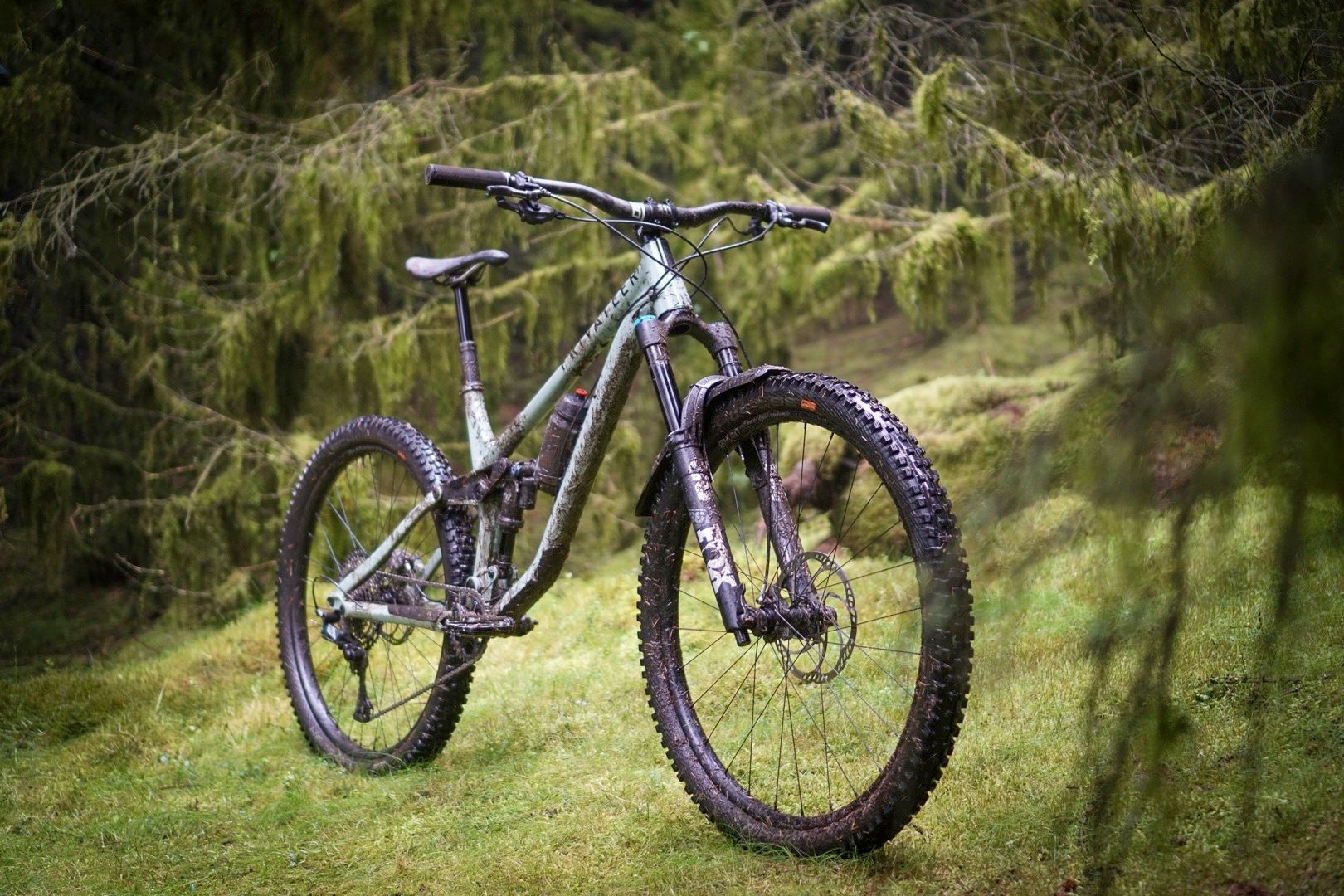
Where the 161 was designed as an all-out EWS race machine, taking rider feedback into account, Privateer recognised that not everyone is riding elite level stages every weekend and wanted to make a bike that was less race-focused and a bit more versatile. To fill that gap, today Privateer has launched the all-new Privateer 141, and we’ve been lucky enough to have one for the past week or so to put it through its paces.
The Bike
Built around 29-inch wheels (apart from the smallest size that rolls on 27.5), the 141 has been designed to be a bit of a jack-of-all-trades bike with 141mm of travel and a 150mm fork. Comfortable and efficient enough to pedal all day round the local, yet capable enough for smashing out park laps or taking on the odd enduro race.
The look of the bike is unmistakably Privateer, with the same long and low silhouette and super steep seat tube, although tweaks have been made to both the geometry and kinematics to make a more all-round ride.
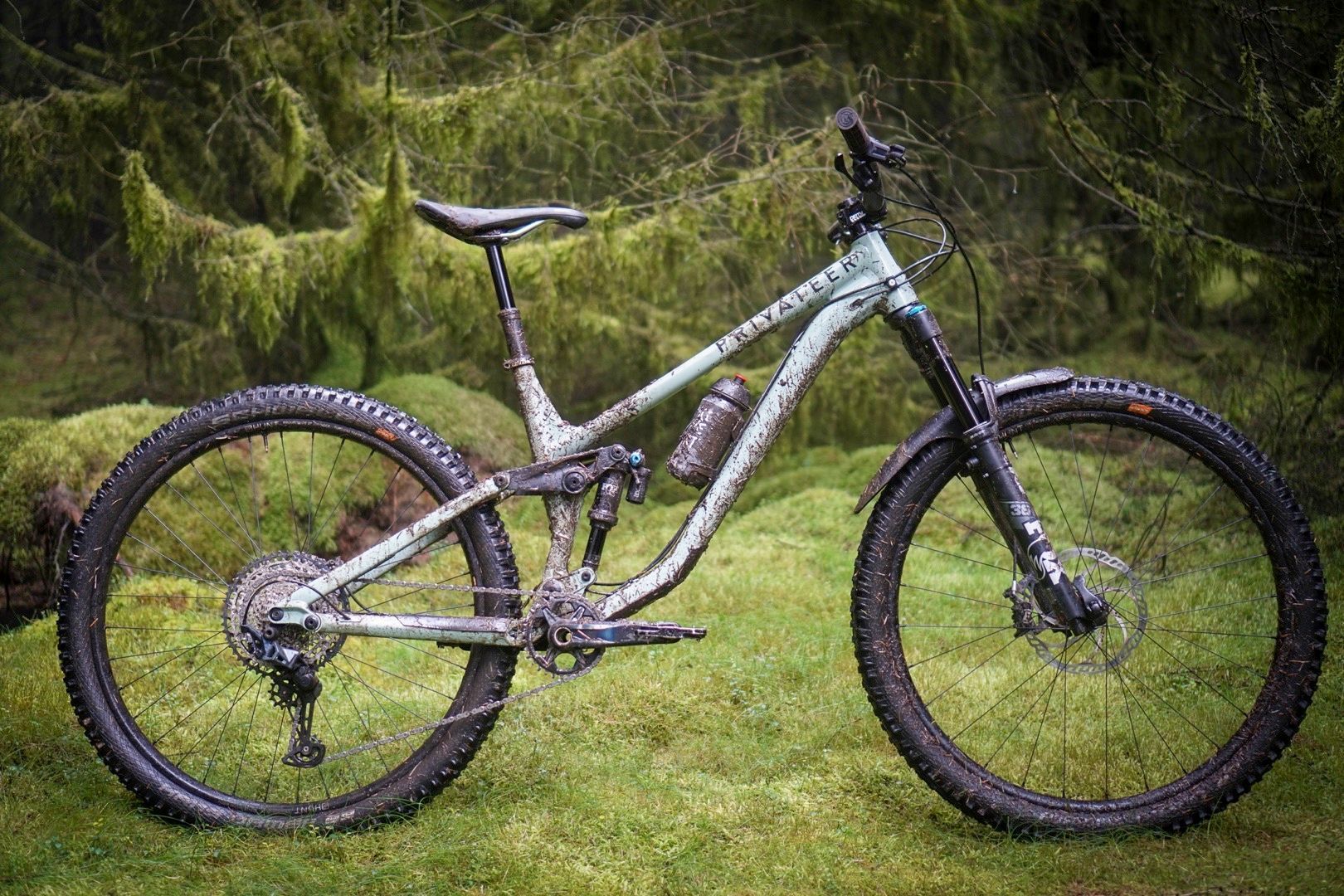
Based around the same platform as the 161, the all new 141 is crafted from 6066-T6 aluminium by industry renowned welders in Taiwan. The 141 uses the same Horst Link suspension layout as its stable mate to deliver 141mm rear wheel travel via a one piece rocker link. Privateer opted for a one piece link to not only add stiffness and strength to the frame, but also to ensure a high level of alignment for increased bearing life.
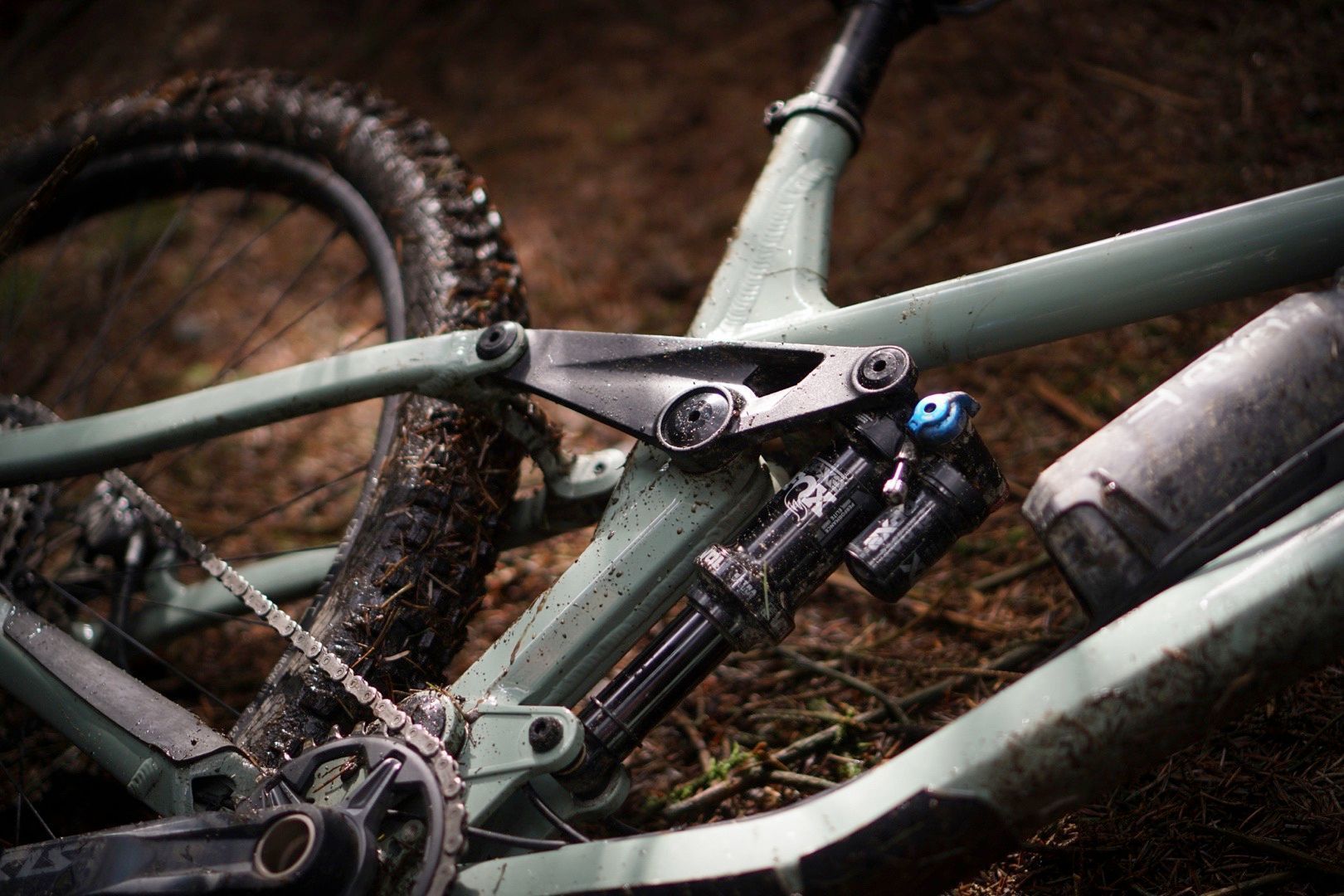
The frame features internal routing for the dropper post, while all other cables and hoses remain fully external, down the top of the downtube, for ease of maintenance and swapping of components. Privateer has also opted for a threaded BB to again make servicing and maintenance nice and easy, and around that are ISCG05 tabs for mounting a chainguide. There are also neat headtube mounted cable clamps to stop unwanted cable rattle and protect the frame from cable rub.
Continuing the theme of protection, the 141 features rubber protection under the downtube / BB area and on the drive side chainstay to ward off unwanted rock strikes, protect from chain slap and keep things quiet.
Another design feature of the frame is the use of three bearings within the main pivot. Due to the position of the chainring, the main pivot is offset, so the 141 has two bearings on the drive side to help spread the load and keep things running smoothly and trouble free.
Geometry
With a reputation for progressive geometry, Privateer has muted down some of the extreme numbers seen on the 161 to make the bike a more versatile choice for everyday riding, but the 141 is still on the extreme side of the geo spectrum.
The 141 is available in 4 sizes, from the smallest P1 that runs on 27.5” wheels and has a reach of 440mm, up to the largest P4 that runs on 29” wheels and has a reach of 510mm. And it’s not just the reach numbers that increase as you go up the sizes, Privateer has also gone with size-specific chainstay length – from 434mm on the P1, up to 452mm on the P4.
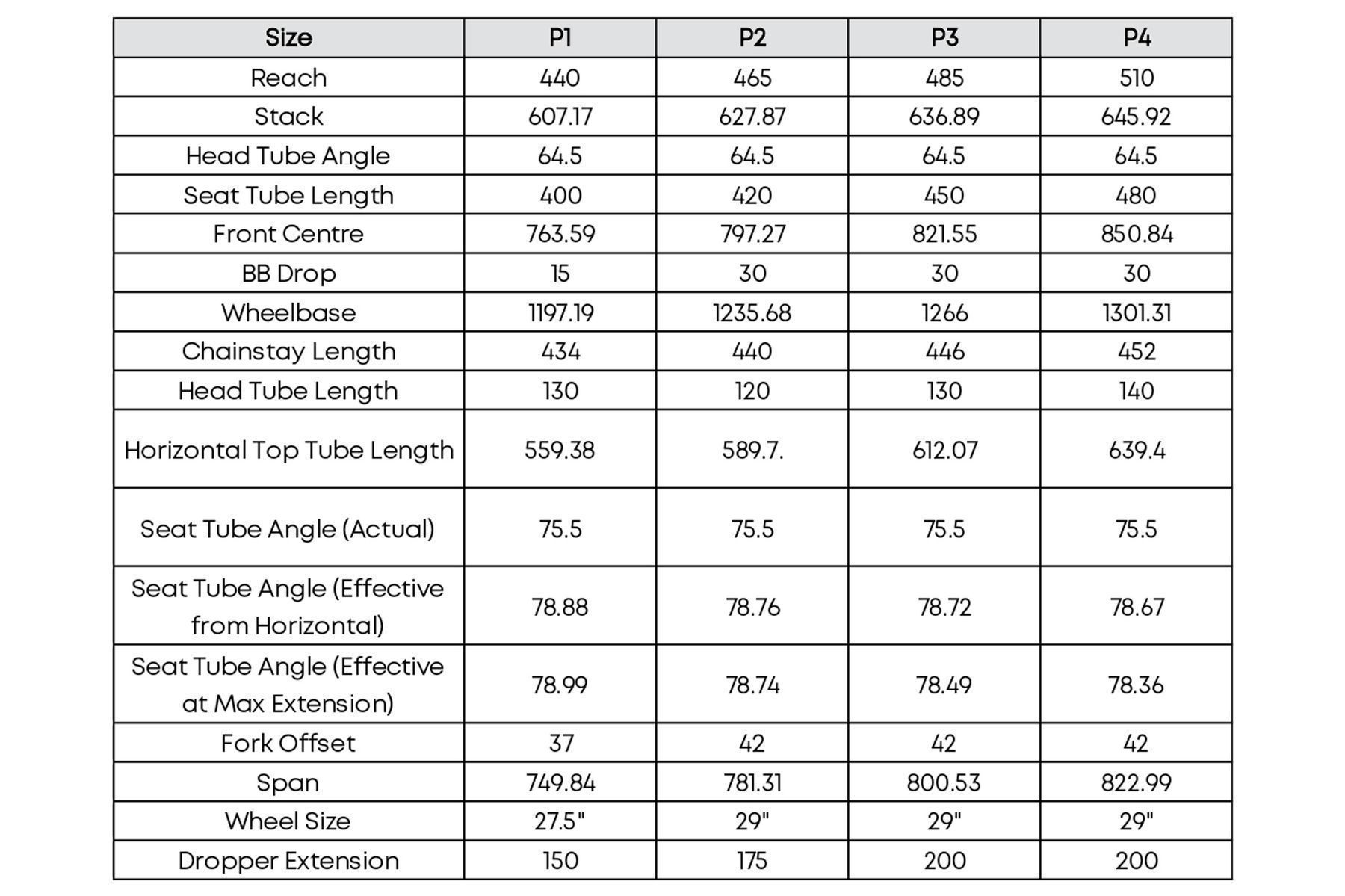
Our test bike is a 29er P3 which features a roomy 485mm reach measurement, paired to a similarly long chainstay length of 446mm. The head angle on the 141 sits at 64.5 degrees showing its aggressive intentions and the effective seat tube angle on our P3 is a properly steep 78.72 degrees. Even the actual 75.5-degree actual seat angle is steeper than quite a few brands’ effective. And while this is a genuinely steep seat angle, it has been purposefully slackened off from what you’ll find on it’s bigger brother. The idea being that the 141 is designed to be ridden outside of the race tape and used as a do-everything bike, the slightly reduced angle will take weight and pressure off the wrists and hands for long days in the saddle while still remaining super-efficient.
With the 141 being designed as a versatile, do-everything bike, Privateer was aware of the need for it to pedal well, yet not be held back on descents. To address these needs, Privateer has engineered a high anti-squat value into the suspension for efficient pedalling, along with a progressive spring rate for good small bump compliance, yet plenty of big hit and bottom-out support.
The Build
Available for pre-order for today, the 141 is available as frame only, or in a single full bike option. Price for the frame, Fox DPX2 Performance Elite and headset is £1,489 while full bike pricing is £2,989. Our test bike was pretty much full production-spec, bar a couple of small changes.
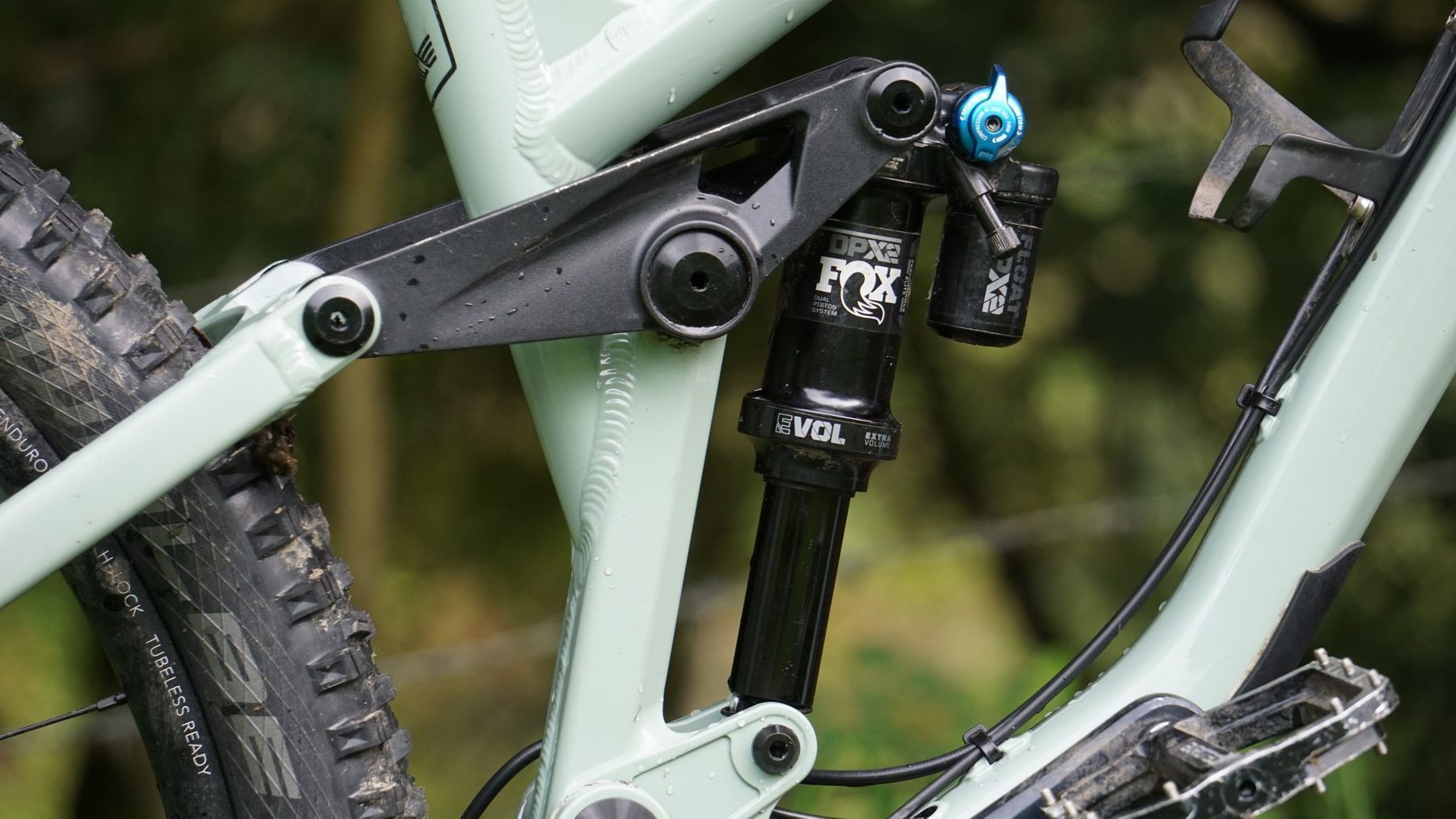
As with the frame only option, full builds come specced with a Fox DPX2 Performance Elite outback, while taking care of suspension duties upfront is a matching Fox 36 Performance Elite Grip2 with 150mm of trail taming travel. With the fork having the higher end damper, you benefit from separate high and low-speed adjustment for both compression and rebound.
The drivetrain is a full Shimano 12 speed setup, with an SLX crankset, rear mech, 51 tooth cassette and chain, mated to an up-specced XT shifter, giving you plenty of range for winching up the steepest of inclines and sprinting back down. Taking care of stopping are a set of powerful Magura MT5 4 piston brakes, for dropping an anchor when things get a bit too rowdy, Upfront is a big 203mm Storm HC rotor with a 180m outback.
As you’d expect from a brand under the same parent company (The Rider Firm), the 141 is rolling on a set of Hunt Trail Wide wheels with a broad 30mm internal width.These are shod with aggressive rubber from Schwalbe, with a Magic Mary 2.35 up front and a Hans Dampf 2.35 on the rear, both in Super Trail Soft flavour.
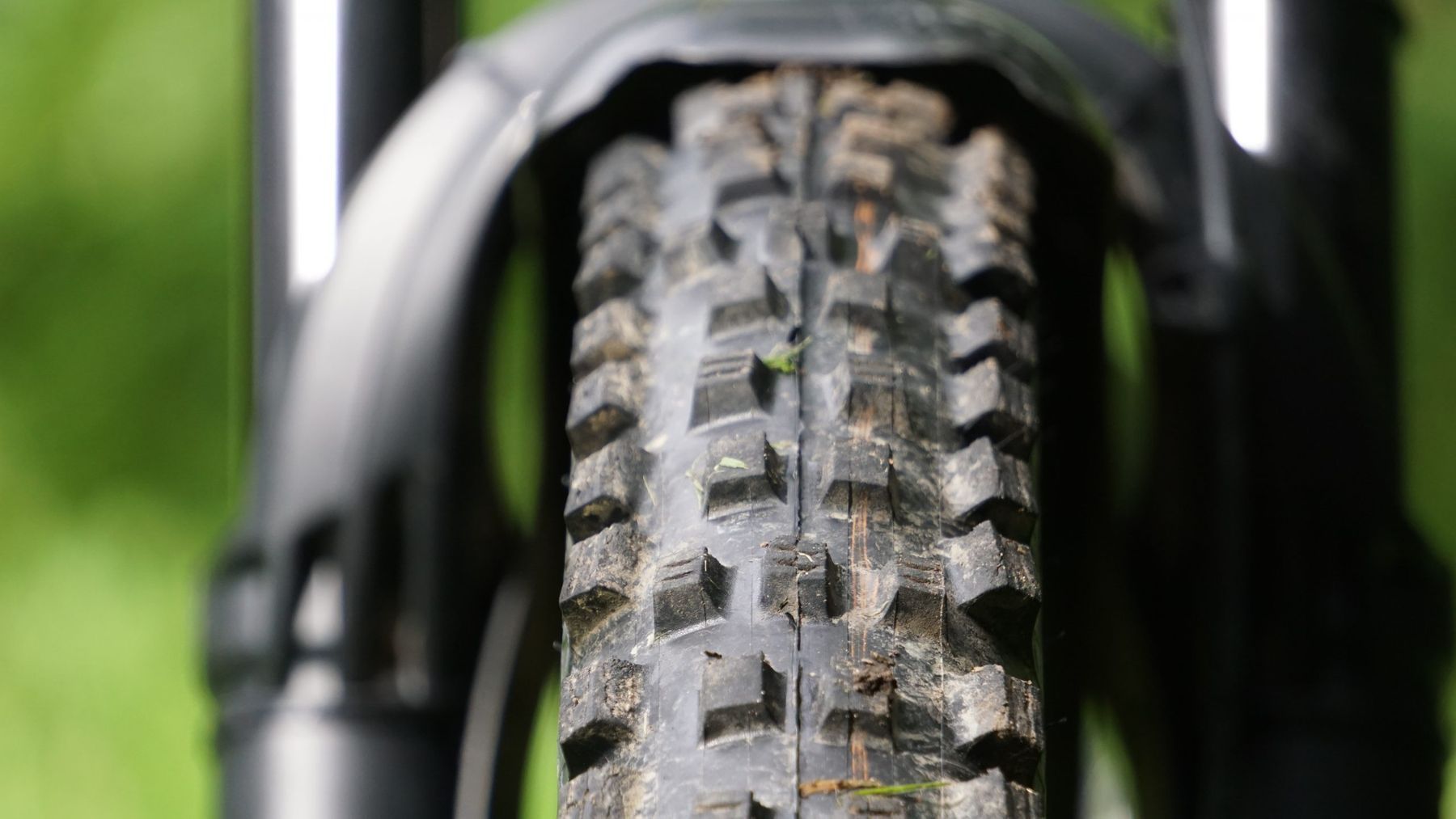
The dropper post is a cable actuated OneUp V2 180mm, and bolted on top of that is a Fabric Scoop Elite Saddle. Production bikes will also have Fabric Fun Guy grips, and the cockpit will be full Race Face with and 800mm Turbine R br and 40mm Aeffect stem, although our test bike varied slightly with a Deity cockpit and grips,
Set Up
Getting the 141 set up was nice and simple, with no unnecessary faff. With it having Fox suspension front and rear I checked the product manuals online and took my base setting from there.
I weigh around 86kg and from using Fox’s baseline settings I started with around 89psi in the fork which gave me around 20% sag. High and low speed compression were 5 back and 10 back from fully closed respectively, with high speed and low speed rebound sitting 4 back and 5 back from fully closed.
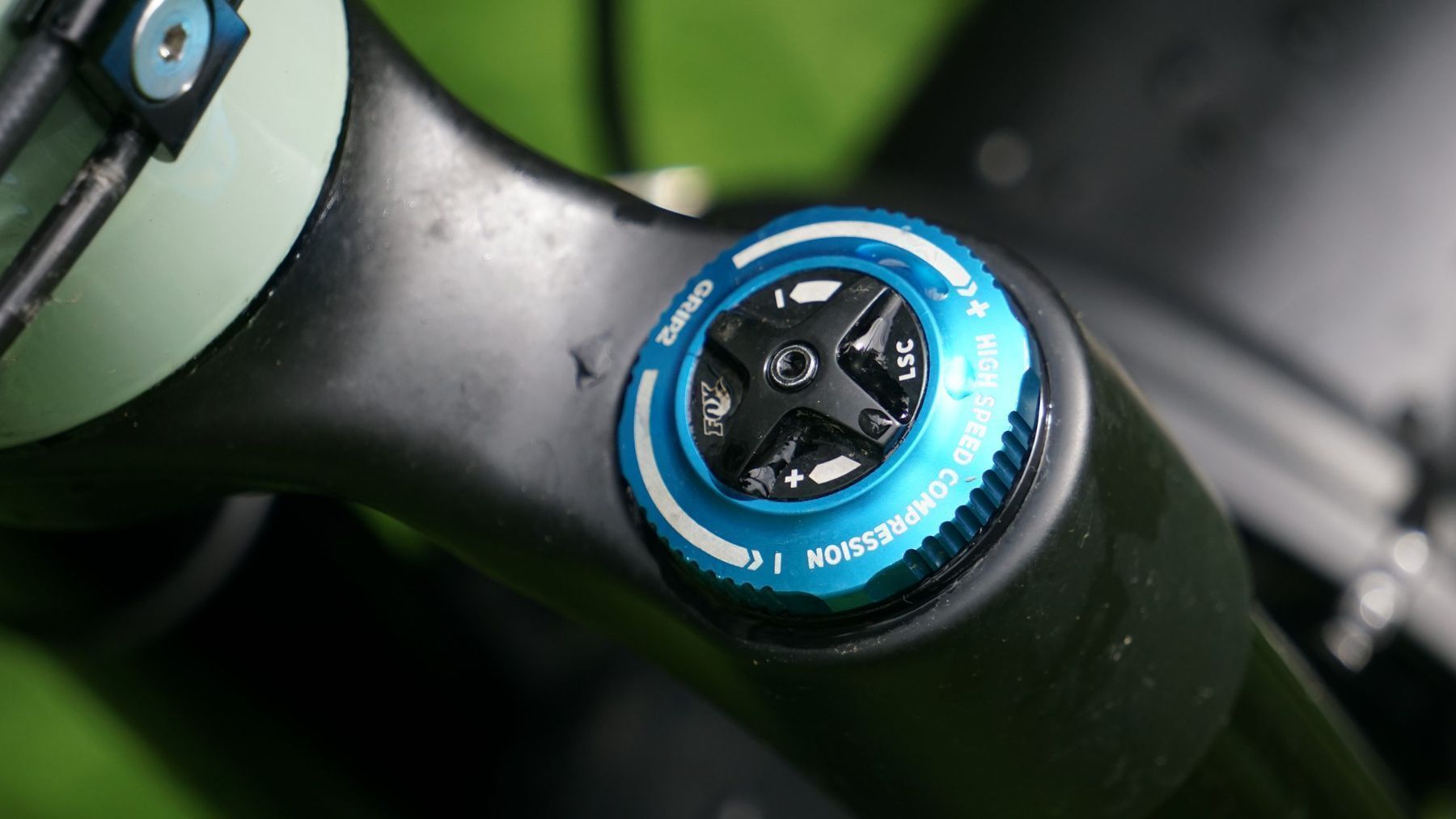
For the shock, I settled on around 235psi which gave me the 30% sag I was looking for. Again using Fox’s set up guide I set the rebound 7 clicks back from fully closed and just a couple of clicks of low speed compression.
Since that initial set up I’ve dropped the pressure in the fork down to around 84psi and taken another click off high speed, and a couple of clicks off low-speed compression on the fork. Other than that things have remained the same.
The Ride – Climbing
While the numbers for the 141 all point to a long bike on paper, jumping on for the first time the seat angle the seating position is actually a lot more compact than a lot of other modern bikes. Where I’ve had to slam the saddle forward on the rails on some other bikes, on the 141 this wasn’t the case.
The steep seat angle and decent reach put you in an efficient and comfortable position for spinning along flatter trails and access roads and long stints in the saddle. The 141 is certainly no flyweight XC bike at nearly 34.5lbs (as tested) but once the gradient increases and you start climbing, the 141 feels really efficient with no noticeable pedal bob and during the test I didn’t even feel the need to adjust the compression on the rear shock. The high anti-squat value and the steep seat angle work together to make each turn of the pedals feel like it’s translated into forward motion.
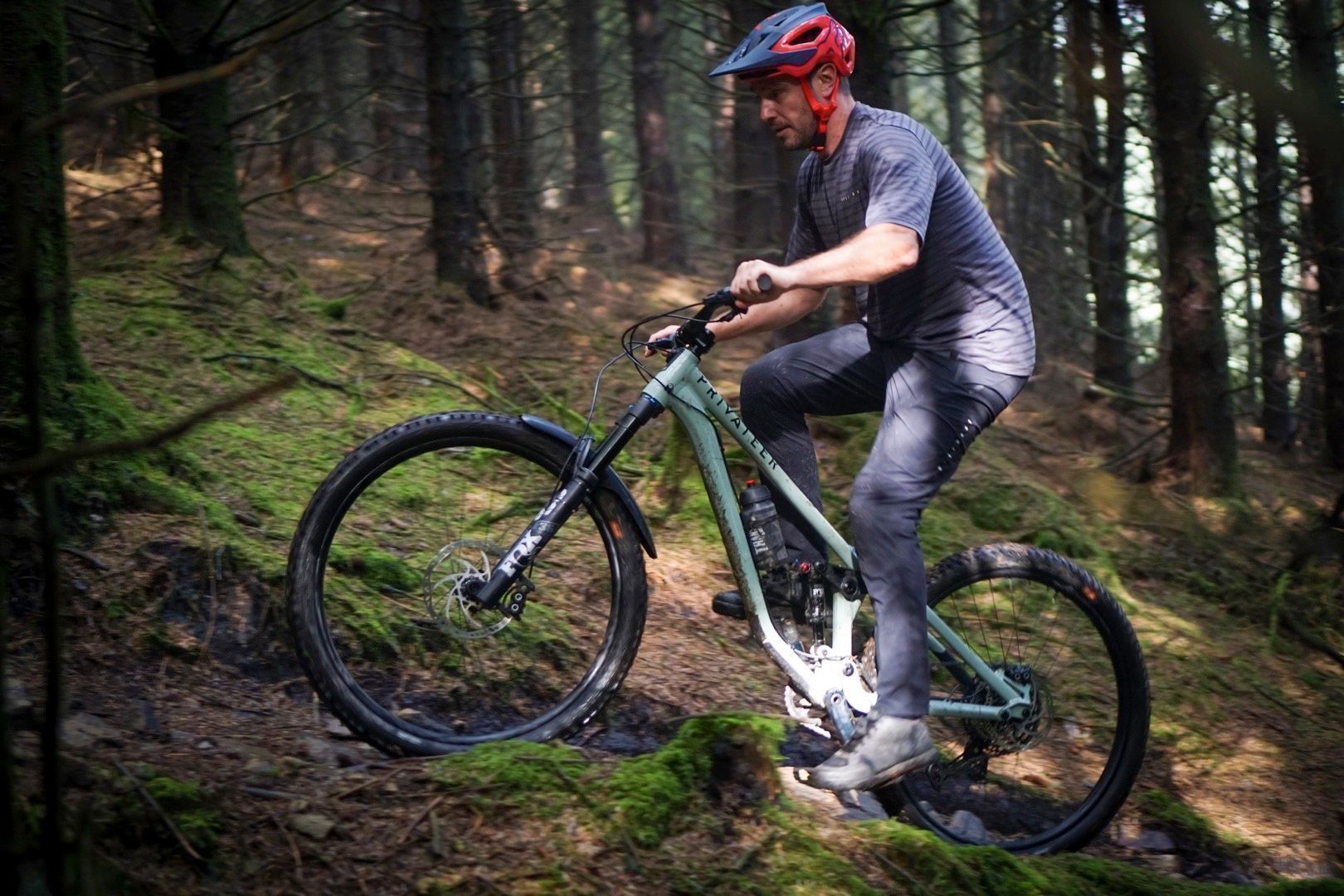
Once things start to get steep and technical, the well-proportioned front and rear ends let you keep your weight centred rather than slamming your chest onto the stem. This gives a great amount of traction without lifting the front, letting you claw your way up pretty much anything, and allows plenty of room for shifting your body weight to get up and over trail obstacles.
The Ride – Descending
One look at the geometry of the 141 and its aggro intentions are obvious, and when the gradient reverses and gravity gets on side the 141 doesn’t disappoint. While this test has been relatively short, I’ve ridden the 141 on pretty varied terrain, from local XC loops, off-piste steeps, to full-on bike park tracks and it’s lapped it all up. And while the 141 is happy to potter about at whatever pace you fancy, the more you push it the better it gets.
Once the trail starts pointing down, the 141 gets up to speed well, without any wallow-y-ness and maintains speed well, with the long-wheelbase giving it a really stable feel. On flowier trails, the rear end offers plenty of support for pumping the ground and working the bike, gaining free speed, encouraging you to look for those secret little pops and gaps on the sides of trails.
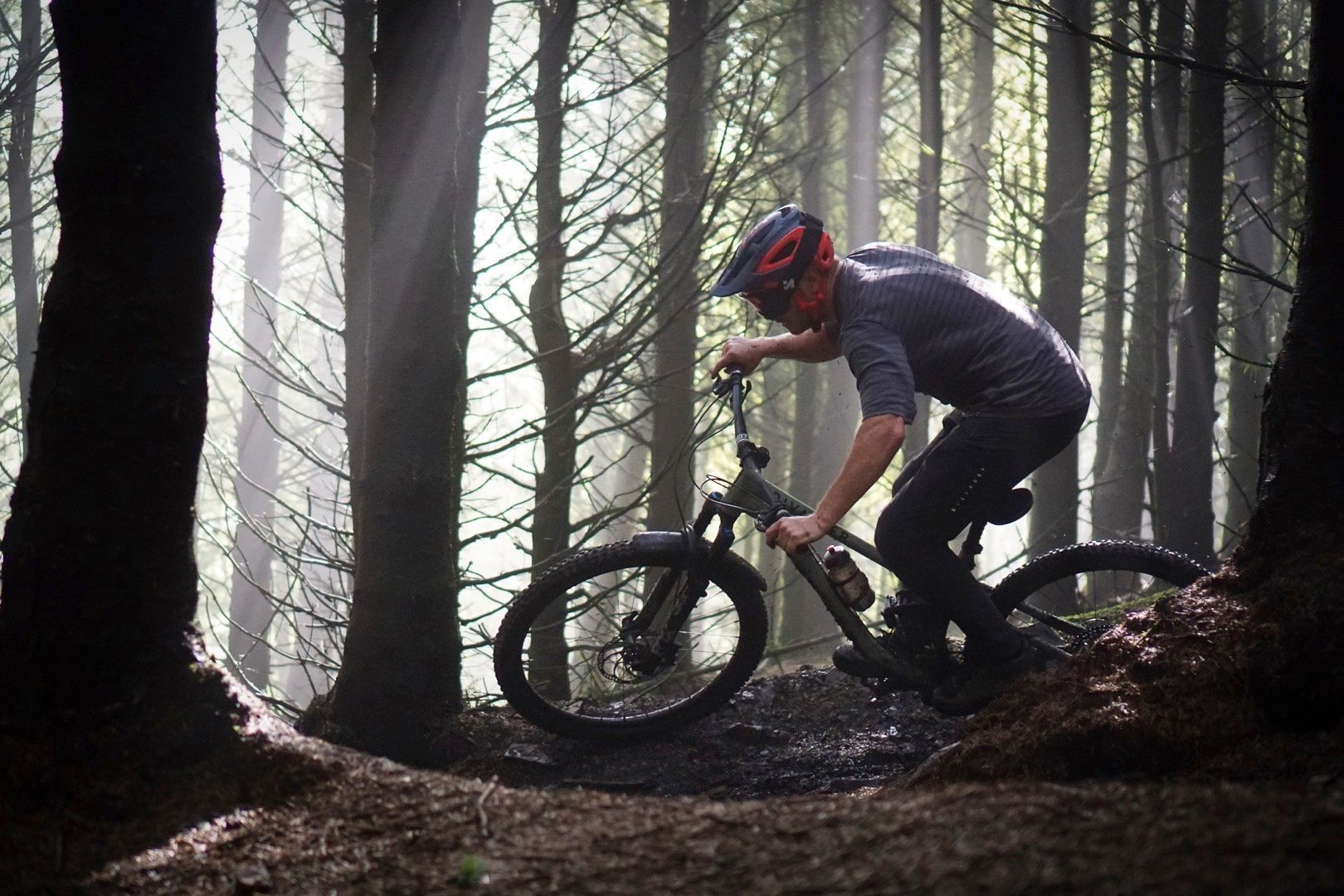
Charging into rough rocky trails, the slack head angle, chunky well-damped 36 upfront and long-wheelbase let you pick a line, get off the brakes and smash through. The rear end does a good job of soaking up smaller trail chatter while still letting you know what’s going on under your feet. It’s supportive enough, without being overly firm, for popping up and over rough sections and gapping obstacles, and I’ve not had any harsh bottom outs.
Roots and off-camber sections are dispatched with similar ease. The well-balanced front and rear put you in the middle of the bike, weighting the wheels and adding grip, giving you the confidence to take the high line.
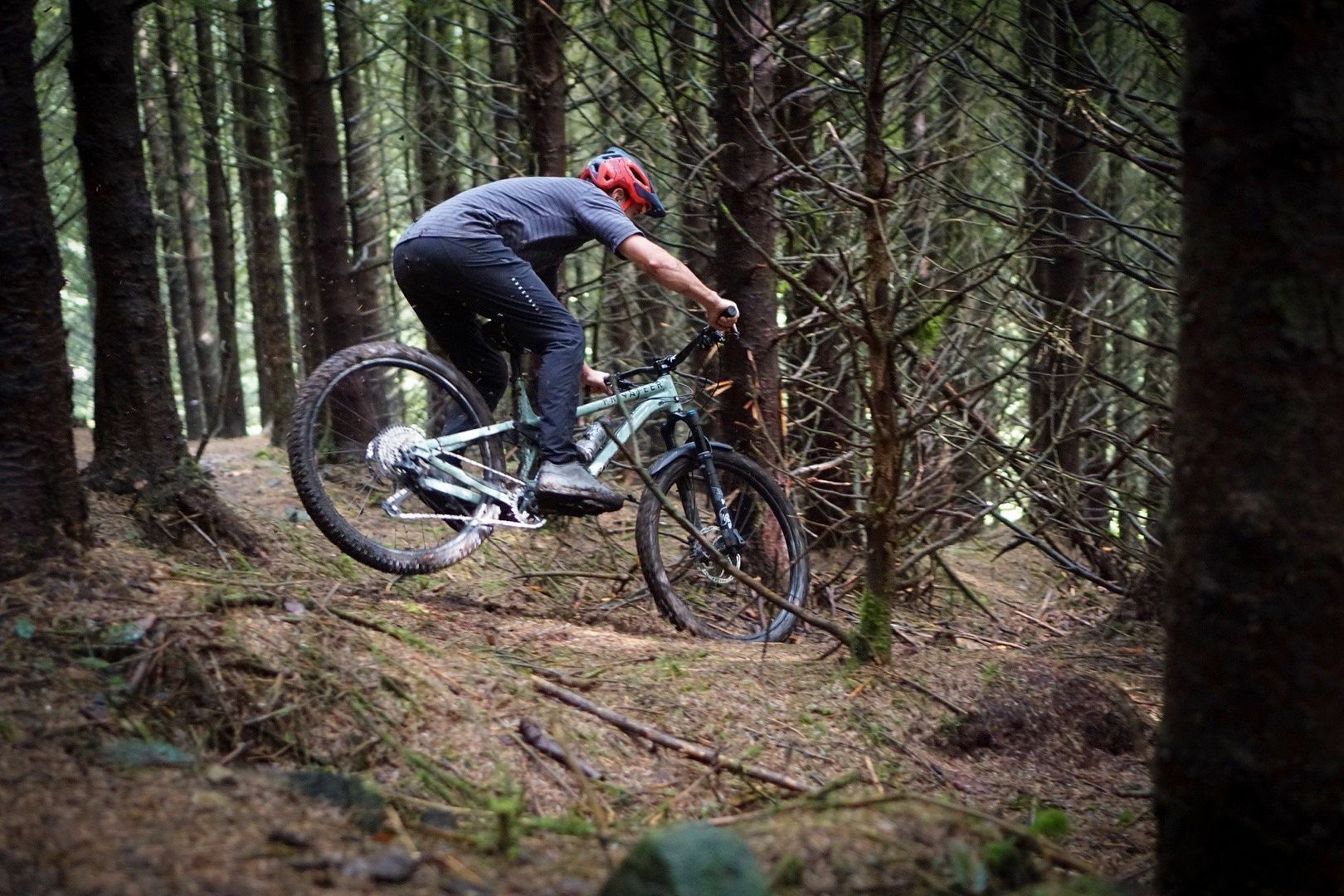
And that same geo adds bags of confidence on steep tracks and chutes but does reward commitment. Rolling into near-vertical plummets, stay in the centre of the bike, weight the front, and you’re rewarded with bags of grip from the Magic Mary. Even on the steepest, greasiest chutes you never feel like you’re going to get pitched over the bars.
And while the 141 may be a long bike it loves to corner. The long reach and chainstays make it easy to push into fast turns – stay centred, lean it in, hold on and the grip is there to slingshot around. But it’s just as happy to take the inside line – cut inside, load the front and let the back end slide round.
Overall
With the 141, Privateer wanted to make a bike that was more versatile than its race-bred stablemate and they’ve achieved it. While it may not be the lightest bike out there, it pedals and climbs really well, and has bucket loads of confidence for getting you back to the bottom to repeat again.
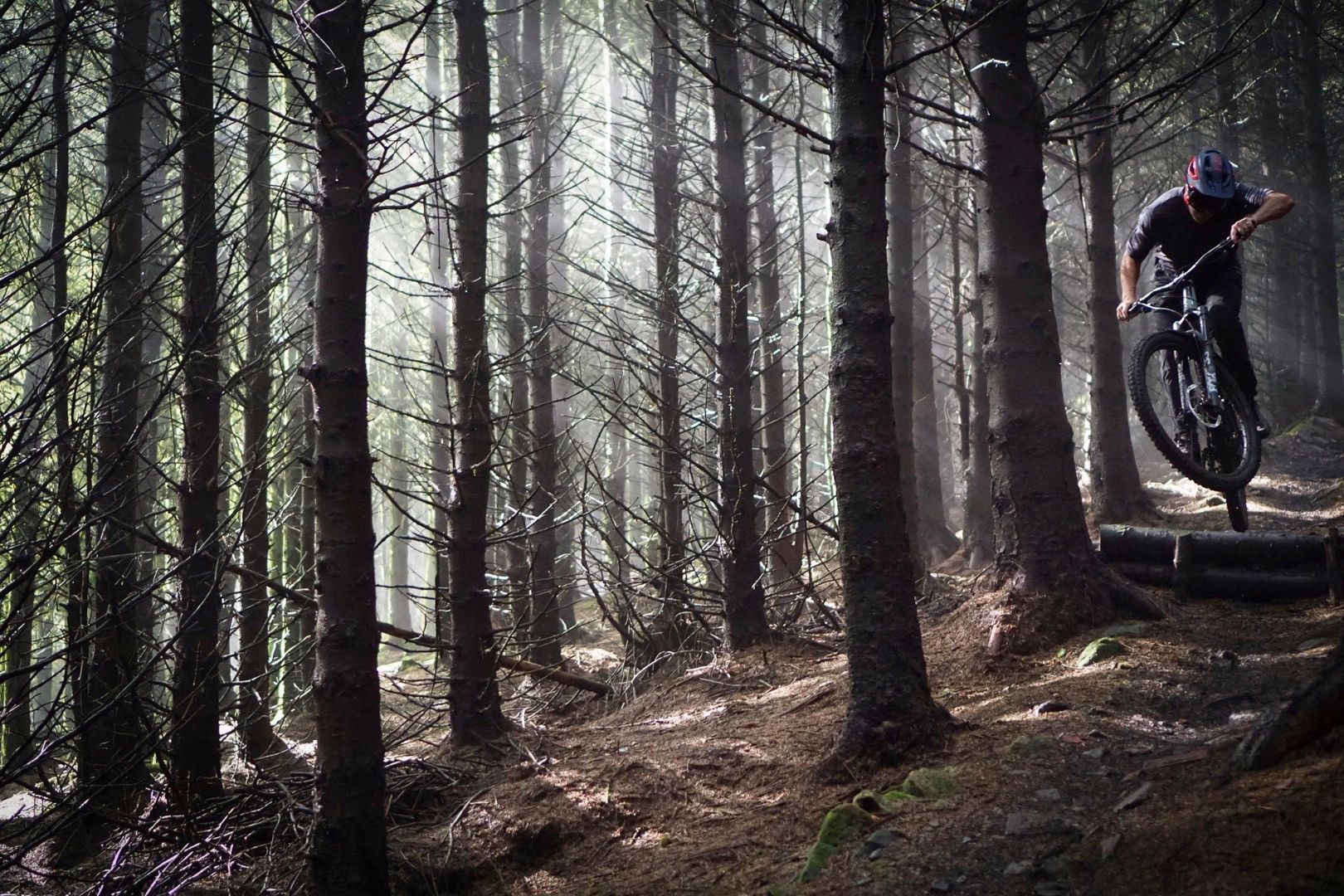
While it’s happy to be pedalled all day, the 141 likes to rip. The sorted geometry and supportive rear end can make you forget your ‘only’ on a 140mm bike, letting you push on as hard and fast as you dare, with the confidence to ride everything from fast and rocky natural trails, super steep off-piste slithers, to high-speed bike parks berms and jumps.
Overall
If you want a bike that has the aggressive geometry of a modern enduro bike, but with a more engaging and versatile ride, then the 141 will be right up your street.






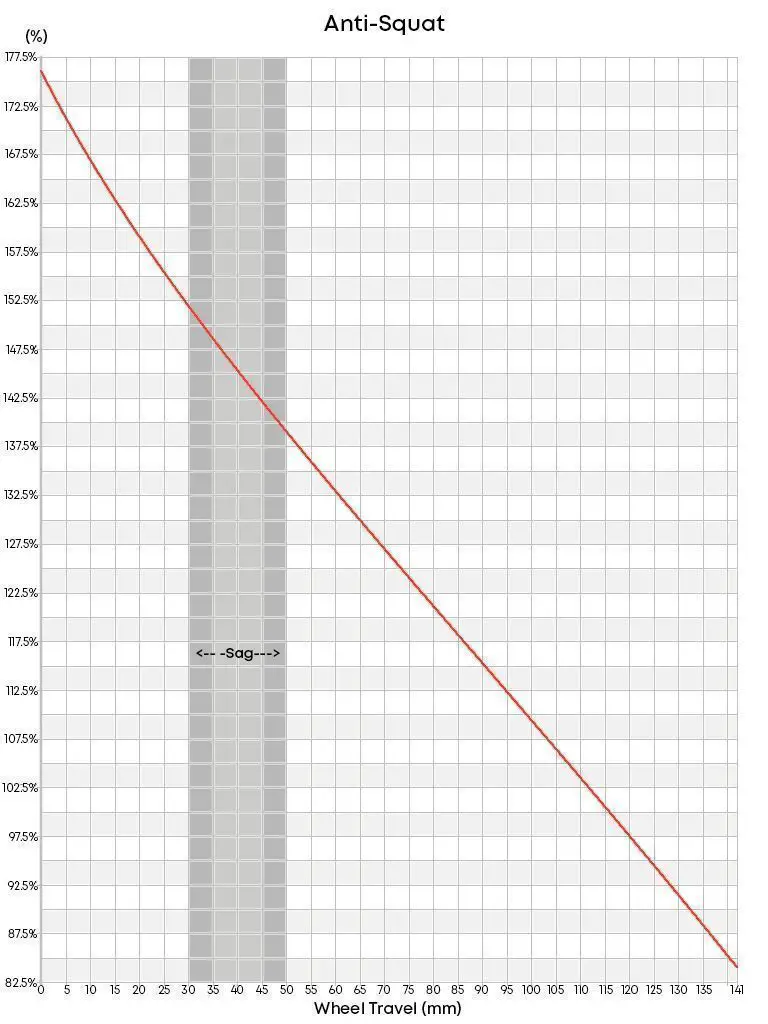
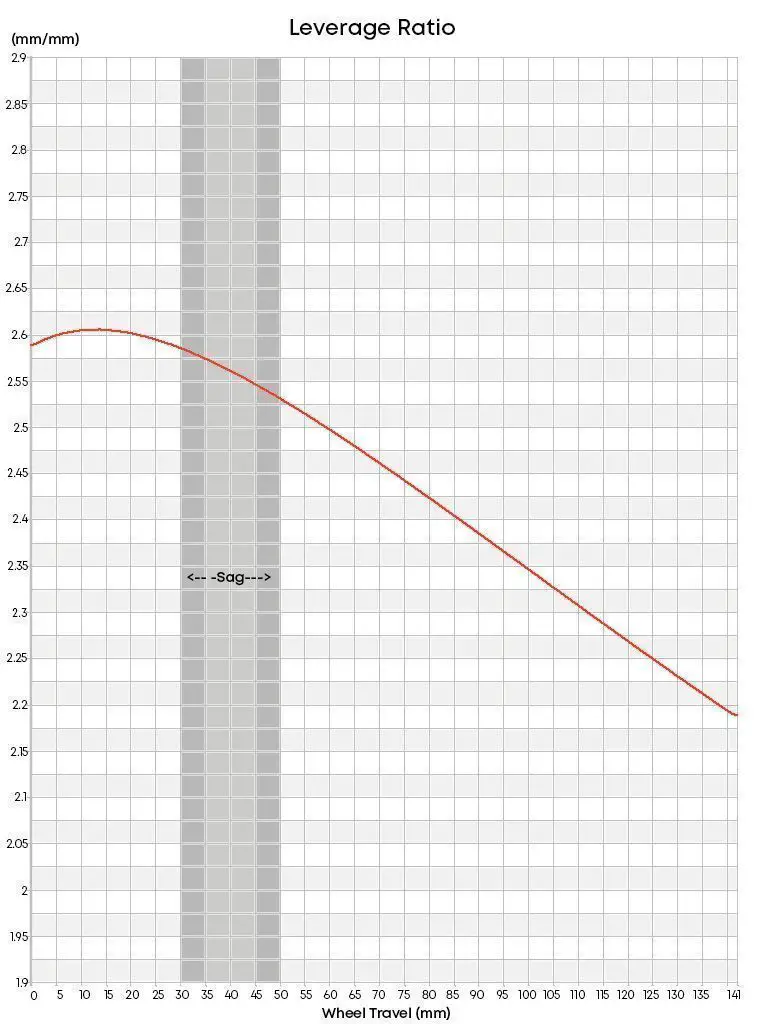
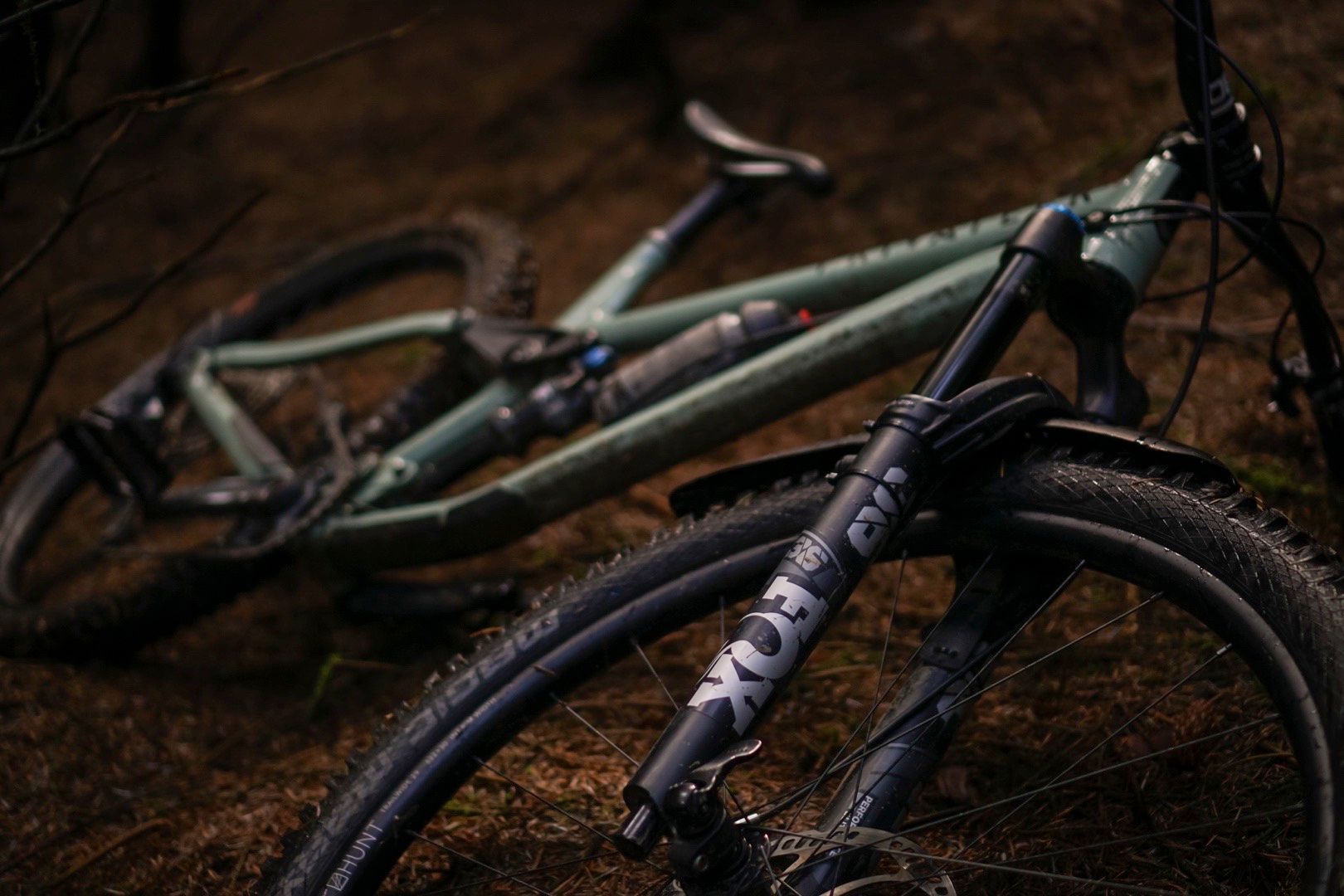
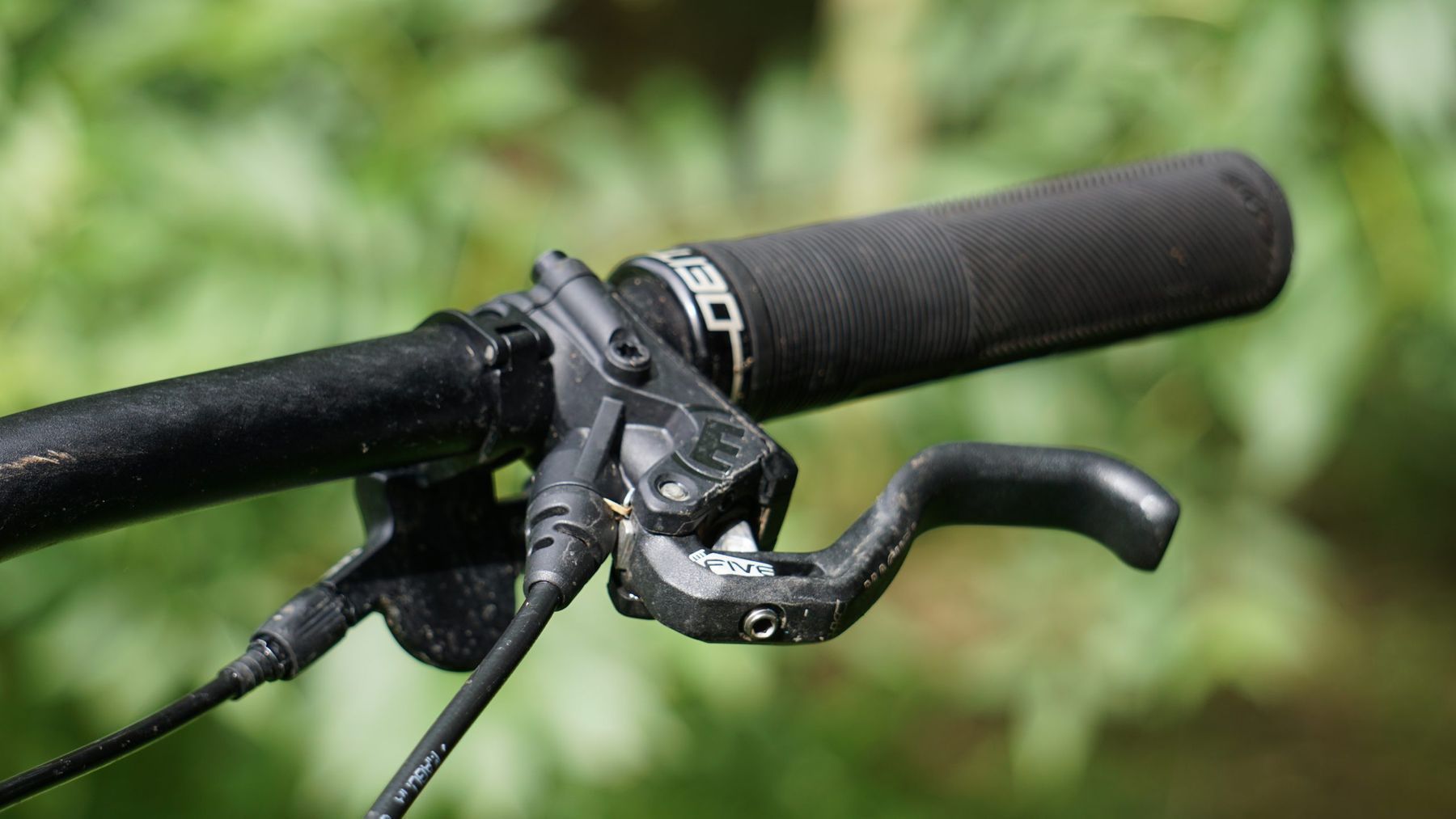
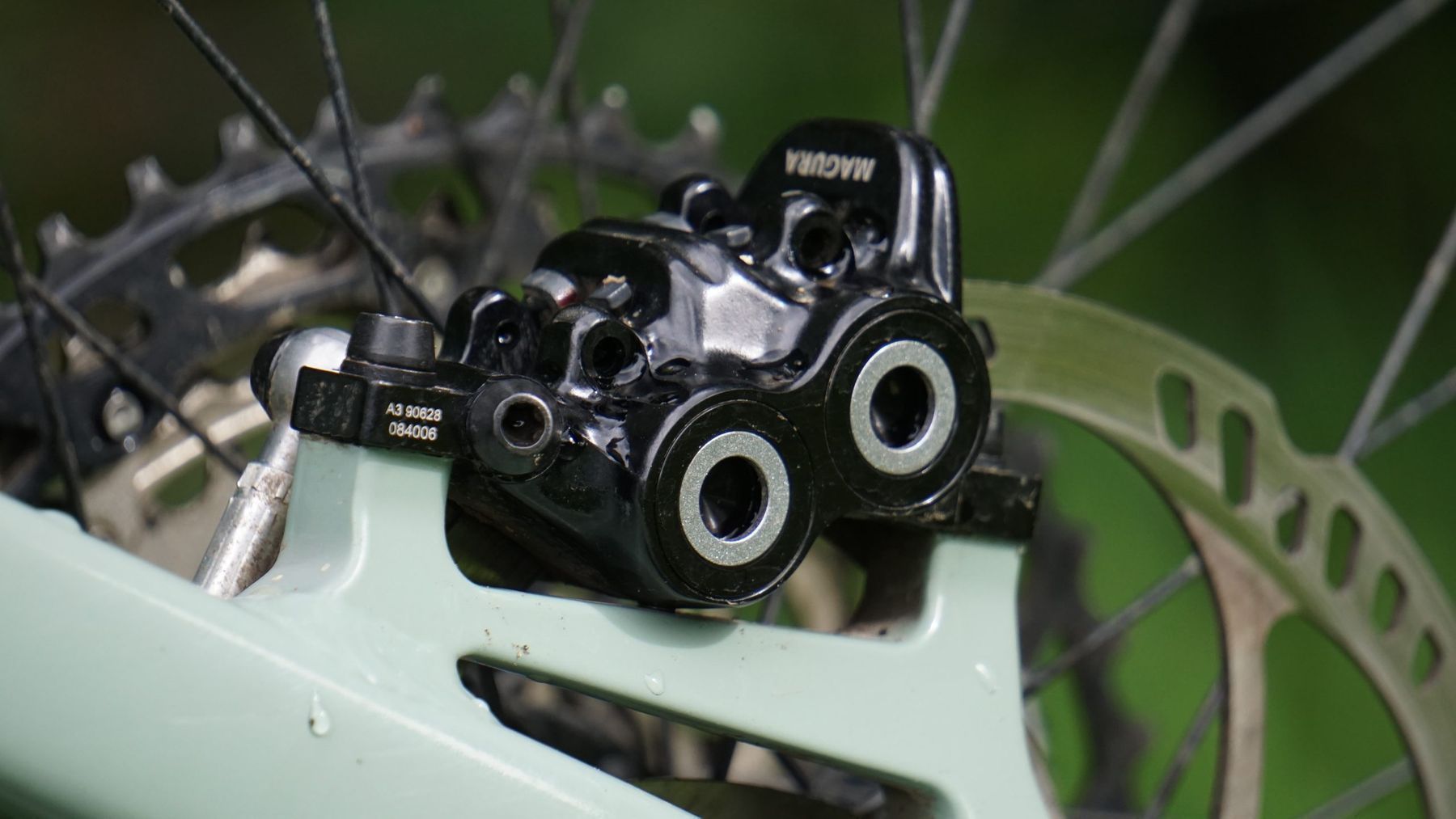

Would love a little test ride..not after a new bike, but wanna see what the fuss is about!!
But also..THAT spec, for under £3k… VERY good pricing…
Fox 36 elite grip 2s are what, £1100 off the shelf??
DrP
35lb for a trail bike!!!!! When did that start being considered acceptable?
I winced a bit at the weight but at least that is with proper tyres, 36s, etc. Light, strong, cheap…..it is a fantastic price and should be pretty robust!
What size fork? 140?160?
It needs to be very robust to justify that weight.
I’m not having ago at privateer, just the general acceptance in the bike industry that we should all ride heavy bikes if we can’t afford the Uber bling. It’s not that long ago where a trail bike this heavy would be laughed at. You can get lighter downhill bikes
Hmmm. This has the potential for a performance:value ratio that as impressive as it is for Hunt’s wheels. I like the look of this a lot, and it will suit a lot of riders. I’d have one 🙂
150mm fork.
Weight seems very similar to the likes of the high end Santa Cruz Hightower in alu – the lower spec alu ones weigh a bit more.
@chrismac – you can get lighter DH bikes because they don’t have droppers or dinner plate cassettes. My Starling is 37lb with big tyres and is built to take a beating. Unless you are chasing uphill KOMs it doesn’t overly matter.
“Charging into rough rocky trails”
on Hunt Trailwides!? best of luck with that…
Why do people get so hung up about weight? I’d prefer a heavier bike than one that breaks, punctures or buckles when giving it a hammering.
Put it this way, who notices if they put a water bottle on a bike or strap a tube to it or multi tool? No one. Yet 1 litre of water weighs 1kg, 2.2lbs.
Good geometry, clever components and reliability any day over a ‘light’ bike.
Just saying……..
It is pretty heavy tbh. My Bird Aether 7 is now about 32lbs with Lyriks / Codes / reasonably robust tyres (MM Addix Snakeskin 2.35 / Maxxis Exo dhr2 2.3) 30mm internal XM481s / Pro4’s etc. Only carbon on it is the gxp X1 cranks. Where is the extra weight in this Privateer – is it mostly bigger wheels and the newer heavier version of the tyres this is running?
@mase I agree that good geo trump everything. I don’t accept that bikes need or should be this heavy. It’sa trail bike, not a race enduro bike. Trail bike should be light and able to be ridden everywhere. If you want a bike to beat then buy the right tool for the job which isn’t a trail bike
This looks great to me! I’m curious about the comments on weight… Perhaps the term “trail bike” simply means different things to different people. Other 29″ bikes with similar intentions are of comparable weight (Ibis Ripmo AF, Norco Sight A2).
“Perhaps the term “trail bike” simply means different things to different people.”
IT seems “all mountain” has gone away, and “enduro” is now reserved for 170+mm race-only bikes. Trail has to fill the very wide gap between gravity racing and XC racing. At least until Pinkbike make “downcountry” a thing.
Like it.. A lot..,not concerned with weight.. After riding a Moxie I know this
Geo works .. not so sure about the big Ellesworth swing arm but function over form is a Win..
Like it.. A lot..,not concerned with weight.. After riding a Moxie I know this
Geo works ..